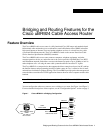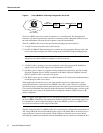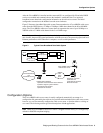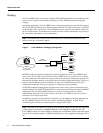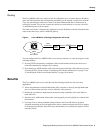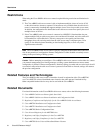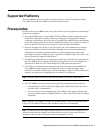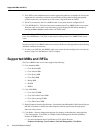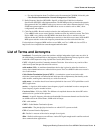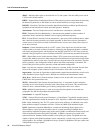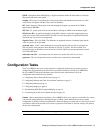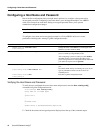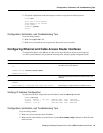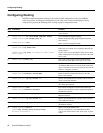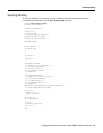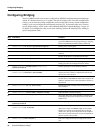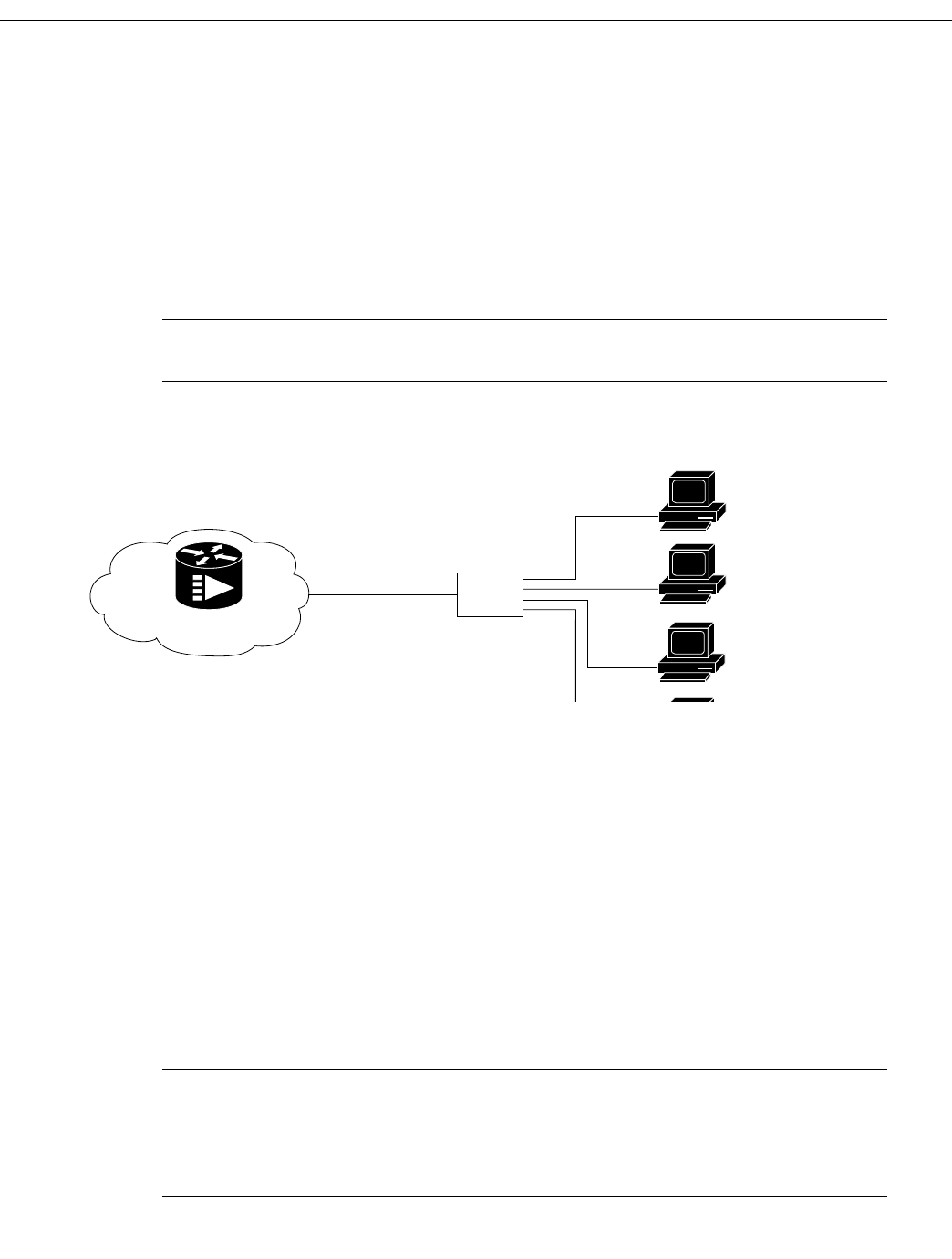
Feature Overview
4
Cisco IOS Release 12.0(5)T
Bridging
The Cisco uBR924 cable access router complies with the DOCSIS standards for interoperable cable
access routers; it supports full transparent bridging as well as DOCSIS-compliant transparent
bridging.
In bridging applications, the Cisco uBR924 acts as a transparent bridge for up to four PCs plugged
directly into the four Ethernet ports on the rear panel of the unit. The cable access router is connected
to the Internet via the coaxial cable. All four Ethernet ports are treated as one Ethernet interface by
the Cisco IOS software. The IP addresses for the PCs and the coaxial cable interface are typically in
the same subnet, although this is not a requirement.
Note If the attached PCs and the coaxial cable interface are in different IP subnets, the cable
interface must have a secondary address.
Figure 4 Cisco uBR924 in a Bridging Configuration
DOCSIS-compliant transparent bridging is the default configuration of the Cisco uBR924 cable
access router. If your cable service provider is using a DHCP server, all you need to do is connect
the cables and power on the cable access router; your service provider’s configuration program will
automatically configure both the coaxial cable interface and the bridging functionality. You do not
need to set up IP addresses for the attached PCs or enter any Command Line Interface (CLI)
configuration commands. This type of operation is called plug-and-play bridging.
In DOCSIS-compliant bridging mode, the cable access router is able to locate a downstream and
upstream channel; find TOD, TFTP, and DHCP server(s); obtain an IP address; download a DOCSIS
configuration file; and obtain DHCP parameters to work in a bridging mode. For a better
understanding of the processes involved, refer to the online Cisco uBR924 Cable Access Router
Installation and Configuration Guide.
In addition to the plug-and-play method of operation, you can configure a bridging application on
the Cisco uBR924 using the CLI. See the sections “Configuring Bridging” on page 16 and
“Customizing the Cable Access Router Interface” on page 19 for details.
Note The ability of the cable access router to learn CPE MAC addresses in the DOCSIS-compliant
bridging mode is controlled by the MAC CPE option in the DOCSIS configuration file. The
Cisco uBR924 cable access router defaults to learning only one CPE MAC address unless this option
is set to 4. The maximum number of CPE MAC addresses that can be supported in bridging mode is
15.
Cisco uBR7200 series
CMTS
CATV
coaxial cable
HFC network
Cisco uBR900 series
cable access router
Ethernet
Ethernet
Ethernet
PC
PC
PC



